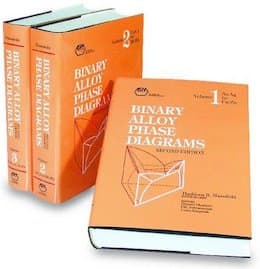
-----
Tin/nickel interdiffusion Q&A
Q. Dear All,
I am investigating the possible interdiffusion effect of tin (used in lead-free solders) into the nickel underplate using various techniques. I find little mention of that in the literature, and wondered if any experience exists that could be shared with me?
I am currently using the information for my thesis and not a commercial reason.
Any suggestions would be warmly welcomed!
Many thanks,
Chris LanghamSemiconductor manufacture - Swindon, Wiltshire, England
2003
A. I am sure nickel-tin intermetallics do exist; I would expect their chemistry to be very similar to iron-tin intermetallics and they exist as FeSn2 at room temperature, although FeSn, Fe2Sn3 and Fe3Sn2 also exist but are unstable at RT. They dissociate into FeSn2 and Fe in various ratios.
To determine the diffusion rate, you can electroplate nickel with tin and then heat treat it at known temperatures for known times. You will see a marked change in the diffusion rates at about 232 °C because this is when tin melts.
Then galvanostatically (i.e., fixed current density, say 6 mA/cm2) anodically strip the tin and the nickel-tin intermetallic in 2N NaOH
⇦ on
Amazon [affil link] at about 70-80 °C. You will clearly see a change in potentials when the tin has been removed and again when the Ni-Sn has been dissolved. Chemical dissolution of Ni-Sn will be slow, but electrochemical stripping is almost 100% efficient. If you are very good, you may even see the dissolution of the tin oxide before the tin dissolves.
Try looking in the technical literature (i.e., Chem. Abs.) between 1960 and 1985 - it is a long time ago, but the scientists around in those days were still pretty damned good!
A phase diagram in the book "Binary Alloy Systems" shows nickel-tin intermetallics: Ni3Sn, Ni3Sn2 and Ni3Sn4. Hope this helps.

Trevor Crichton
R&D practical scientist
Chesham, Bucks, UK
Q. Could you link this book you're mentioning? I'm really interested but I cannot find it from the information you've given. Thanks!
S Marin- Menlo Park, California
April 23, 2024
A. Hi S.
Trevor's posting was from 20 years ago so I don't know if we will be able to reach him for clarification but we'll try.
Meanwhile, we were unable to find that exact title anywhere, including Worldcat. However, a university or large public reference library might at least have ASM's compilation of binary phase diagrams ⇨
or you could search Worldcat.org for promising titles and locations.
Luck & Regards,

Ted Mooney, P.E. RET
Striving to live Aloha
finishing.com - Pine Beach, New Jersey
Ted is available for instant help
or longer-term assistance.
Q, A, or Comment on THIS thread -or- Start a NEW Thread
